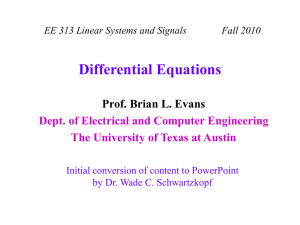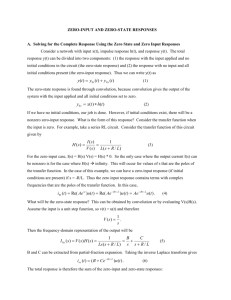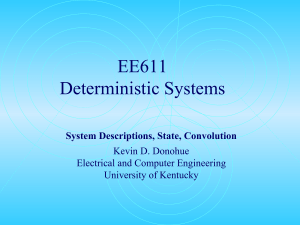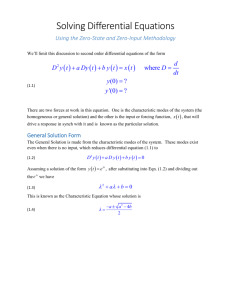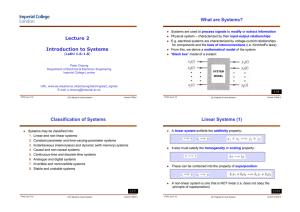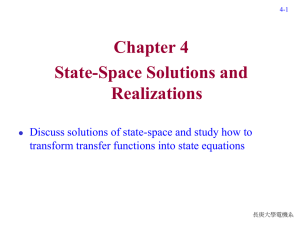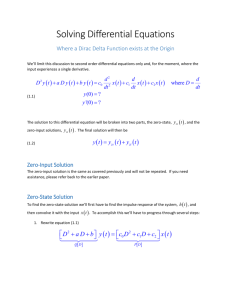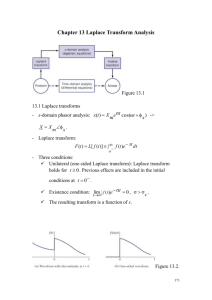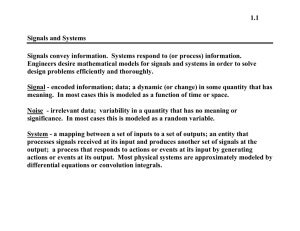4a.1 Total Response:
advertisement
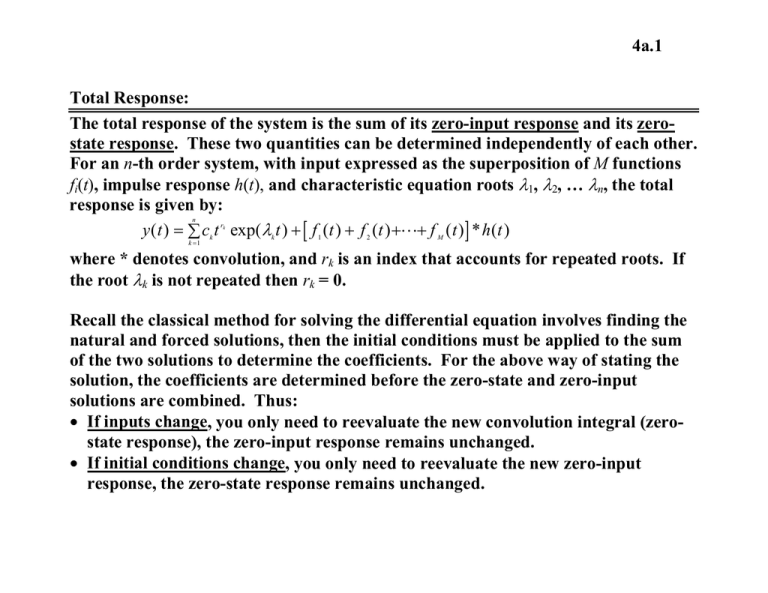
4a.1 Total Response: The total response of the system is the sum of its zero-input response and its zerostate response. These two quantities can be determined independently of each other. For an n-th order system, with input expressed as the superposition of M functions fi(t), impulse response h(t), and characteristic equation roots λ1, λ2, … λn, the total response is given by: y (t ) = ∑ c t exp( λ t ) + [ f (t ) + f (t ) +L+ f ( t )] * h(t ) n k =1 rk k k 1 2 M where * denotes convolution, and rk is an index that accounts for repeated roots. If the root λk is not repeated then rk = 0. Recall the classical method for solving the differential equation involves finding the natural and forced solutions, then the initial conditions must be applied to the sum of the two solutions to determine the coefficients. For the above way of stating the solution, the coefficients are determined before the zero-state and zero-input solutions are combined. Thus: • If inputs change, you only need to reevaluate the new convolution integral (zerostate response), the zero-input response remains unchanged. • If initial conditions change, you only need to reevaluate the new zero-input response, the zero-state response remains unchanged.
